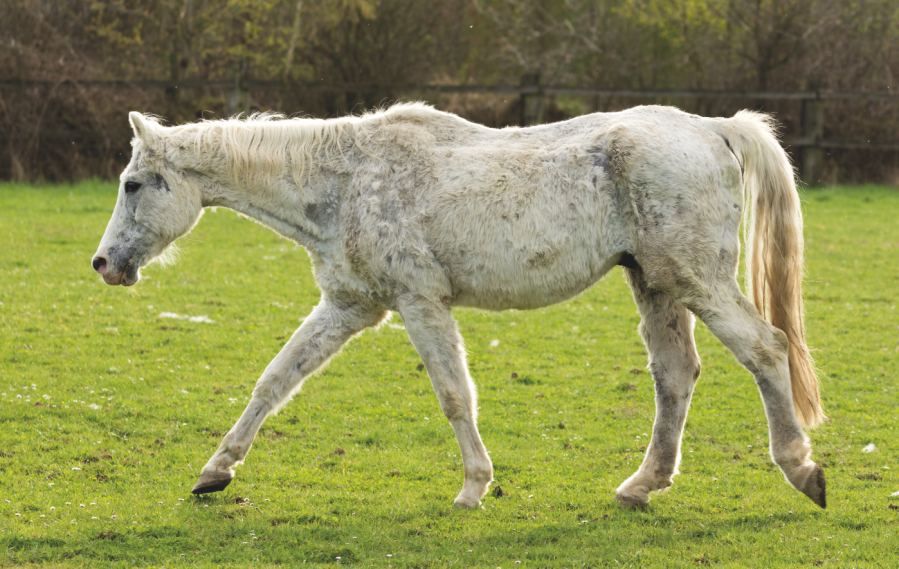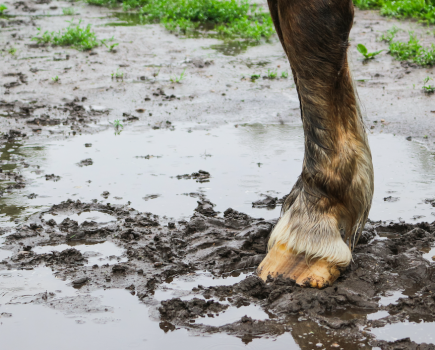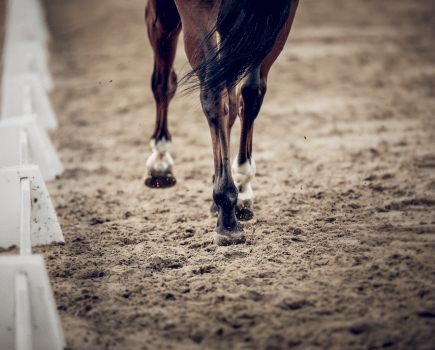To an extent, age is just a number when it comes to our beloved veteran patients and it does not need to define the ability of an older horse or pony to recover from even very serious conditions, writes equine vet Carolina Kalka from Seadown Veterinary Services.
When given a chance and with the right care, a senior equine can regain their fitness and strength and remain by our sides for a few more years.
As with any horse, early diagnosis and referral to your vet is key to securing a happy outcome. Veterans that I see tend to have a whole range of problems, from laminitis and endocrinological issues through to irritating food packing in their diastemas and serious life-threatening injuries and illnesses like the ones discussed here.
Recovery 1: pelvic fracture
When 21-year-old Kowtow was brought into Seadown veterinary clinic I had known him for some time — the Welsh section A had been bought 10 years earlier by Suzanne Gray as a lead-rein pony for her daughter Felicity to ride — and I could see straight away that he was not himself.
Ultrasound examination of his pelvis revealed that he had sustained an iliac wing fracture in his pelvis. Thankfully, the injury was non-catastrophic, and with the diagnosis made the day after an onset of swelling, we could introduce a rehabilitation plan straight away.
Early diagnosis prevented further propagation (spreading) of the fracture line, which could have led to permanent incapability to be ridden or even put the pony’s life at risk.
It was the rapid reaction of Kowtow’s experienced owners to the swelling, followed by the care and love they showed during his convalescence, that played a crucial part in his successful recovery.
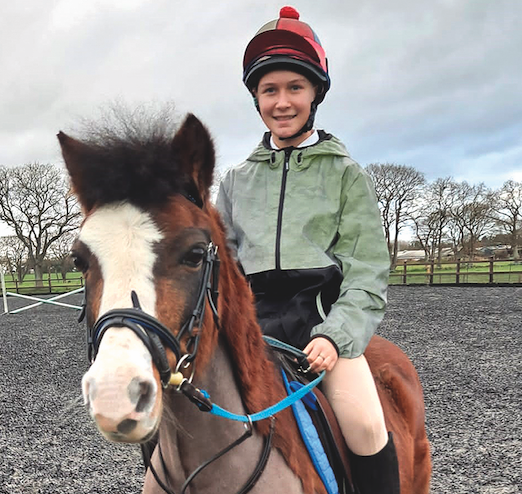
Recovery 2: ligament damage in front and behind
Summer Day suffered serious ligament damage when she jumped a stationary tractor and trailer while turned out in the field. She was 23 years old and, according to owner Lindsey Templeman, there was a strong chance that she wouldn’t recover.
“She chose to jump over the back of the tractor where the trailer was attached and had some nasty, but relatively superficial, cuts to her legs and stifle on her offside. Despite some swelling, she didn’t show any immediate signs of lameness, but she later became lame in her off hind, with the pain appearing to be in the stifle,” recalls Lindsey.
Summer Day’s recovery plan included box rest or a very restricted paddock for 12 weeks after initial treatment of hyaluronic acid and steroids. The mare was diagnosed with acute trauma to the lateral patellar ligament with enlarged medial meniscus — this is a cartilaginous insertion in the stifle joint that acts like a shock absorber between the femur and the tibia.
When the injured stifle joint showed no signs of healing, a polyacrylamide gel was injected into the area. This substance incorporates into the joint’s constituents and increases the elasticity within the joint, as well as protecting from pain.
Significant improvement could be seen in just four weeks, when a strict rehabilitation programme and a slow return to normal level of work was introduced.
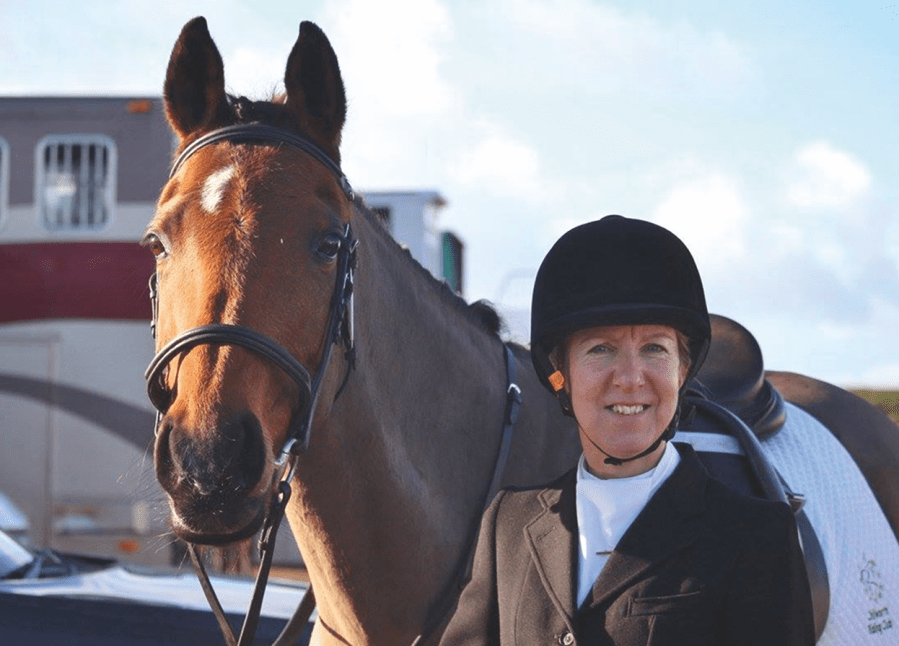
‘A 50% chance of recovering’
However, there was a setback when Summer Day became lame again — this time in front. Ultrasound examination showed lesions in the suspensory ligament of her off-fore. The mare was given a 50% chance of fully recovering.
The treatment chosen was Interleukin-1 receptor antagonist protein (IRAP), which is a system used
to obtain the mixture of multiple anti-inflammatory and regenerative proteins from the patient’s blood. It is one of the most popular biologic therapies available in equine regenerative medicine and enables treatment of a whole range of orthopaedic injuries.
It worked, and four months later Summer Day’s ligament had healed well — to the point of it being almost impossible to see that there had been any problem.
Recovery 3: septic shock
It was the dutiful care of his owners, Lianne Webb and her daughter Romiley, that saved the life of Ben’s Delight, a 23-year-old native pony.
His owners noticed that the dun gelding wasn’t as bright as usual one day, with a slightly elevated temperature and he was lying down, which was out of character.
Ben arrived at the clinic very lethargic, dehydrated and with no appetite. Increased body temperature, impending diarrhoea and multiple signs of moderate septic shock meant he required prompt and intensive therapy.
Immediate blood tests and an ultrasound scan of the abdomen let us plan the intravenous fluid therapy to re-hydrate and combat the acute kidney injury and inflammation of the right dorsal colon — this is part of the large colon — which was discovered during initial examination.
Life-threatening endotoxemia — when endotoxins enter the bloodstream — was resolved and the accurate hydration status maintained, while the wall thickness of the right dorsal colon returned to normal range.
Selection of the effective and safe therapy in the face of acute kidney injury was challenging, but the pony made a full recovery in spite of the severity of the systemic inflammatory response syndrome he presented with.

‘There is more focus on geriatric care now’
It’s never easy to respond to an urgent call to any horse, let alone to a treasured and much-loved family horse or pony with life-threatening health problems.
As with humans and modern medicine, the lifespan of equines has increased with the progress in veterinary medicine. There have been many drug advances and recently much more focus has been put on geriatric medicine in horses.
It’s not just the need to conduct more frequent dental check-ups or manage Cushing’s disease. As vets we also seek to preserve the fitness of the horse, so that he or she can fully enjoy the last decade of their life.
We recognise how important it is to address an older equine’s needs with sensitivity and take care in also managing the expectations of their owners.

